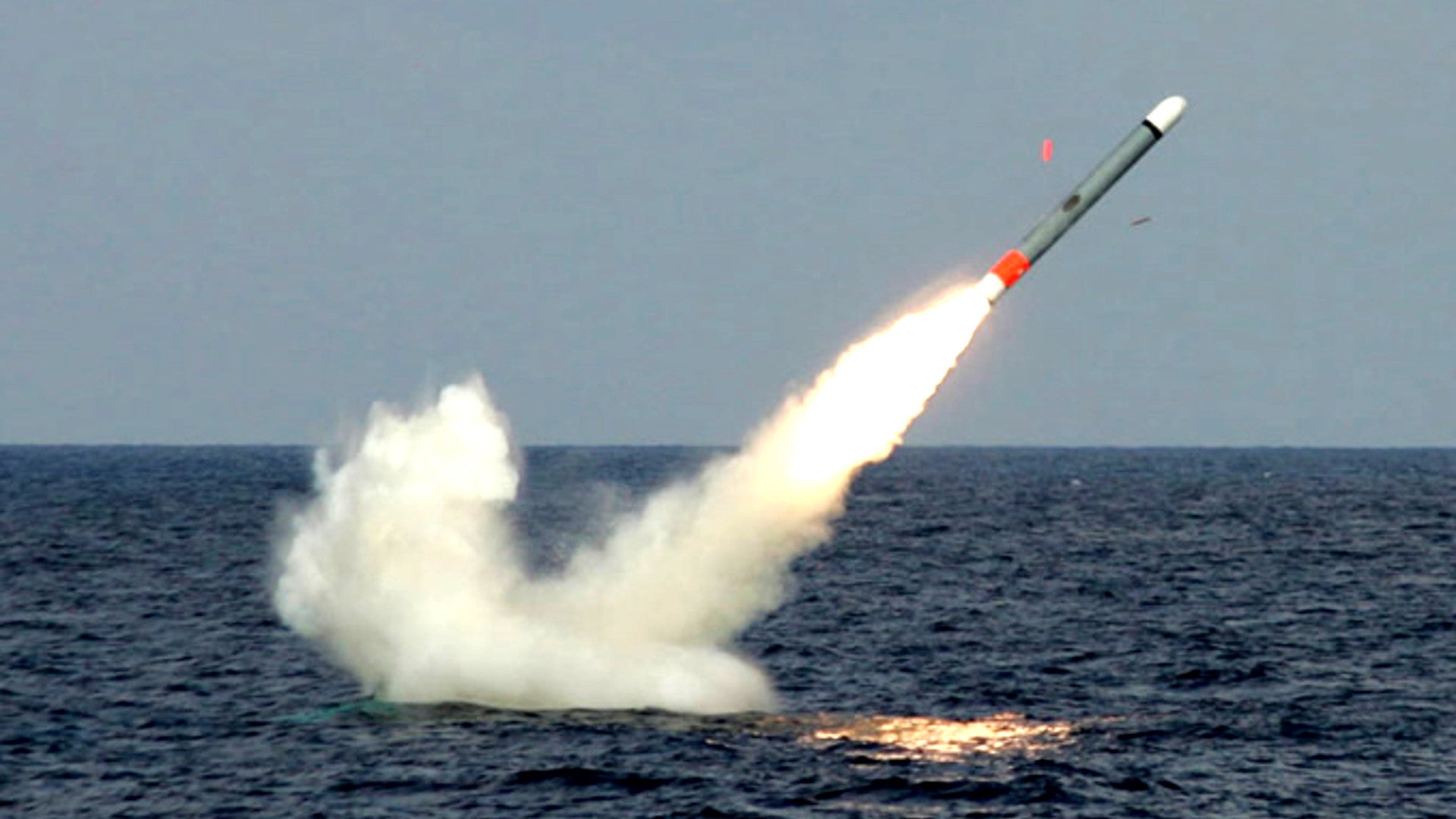U.S. Air Force General John Hyten, head of U.S. Strategic Command, has suggested he’s interested in arming a variety of ships with a new nuclear-tipped cruise missile, including the stealthy Zumwalt-class destroyers, as well as guided missile submarines, or SSGNs, and attack subs. This only renews concerns about whether or not a potential opponent might then dangerously mistake a conventional missile barrage for the start of a nuclear exchange and the possibility that the weapons could make it more likely that the United States would launch a nuclear strike in general.
According to a recent report by Military.com, Hyten made his comments in a speech and while taking subsequent questions during a gathering at the National Defense University’s Center for the Study of Weapons of Mass Destruction in Washington, D.C. on Feb. 16, 2018. Earlier in February 2018, President Donald Trump’s Administration released a new Nuclear Posture Review (NPR) that called for development of nuclear sea-launched cruise missile (SLCM), as well as modifying some existing Trident D-5 submarine-launched ballistic missiles (SLBM) with lower yield nuclear warheads, both ostensibly to offer a “flexible” response to an adversaries own “limited” nuclear strikes.
“It’s important to know that the NPR, when it talks about the Sea-Launched Cruise Missile, does not say ‘Submarine-Launched Cruise Missile,’” Hyten said in his keynote address, according to Military.com. “We want to look at a number of options [when it comes to ships carrying the SLCM] – everything from surface DDG 1000s [Zumwalt class-destroyers] into submarines, different types of submarines.”
The possibility of arming the Zumwalts with the new nuclear armed cruise missile would be a logistic extension of the U.S. Navy’s previously announced desire to have those ships focus on stand-off attacks against enemy ships and targets ashore. The destroyers could conceivably leverage their low-observable characteristics to be able to better position themselves, even in high threat areas, for a flexible nuclear strike during a crisis.
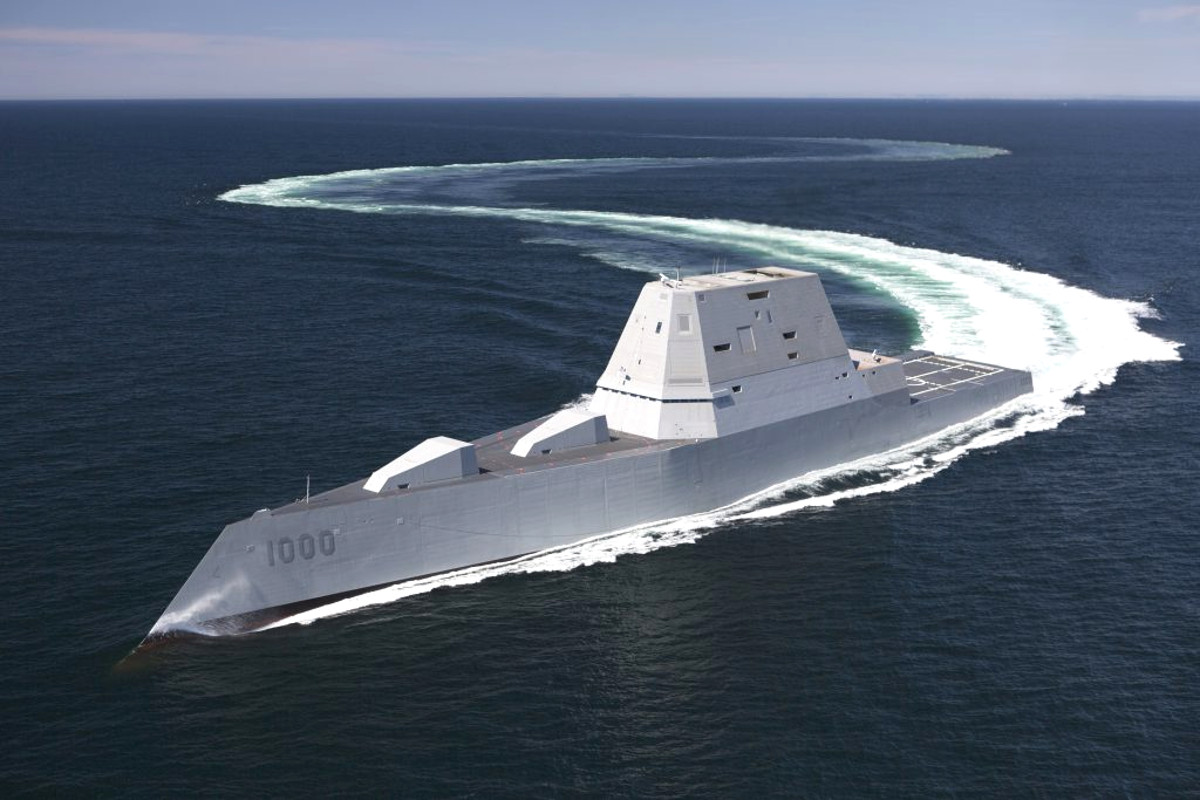
But, at present, the Navy only expects to receive three of these advanced ships and it remains unclear just how inclined the service might ever be to deploy them for actual high-intensity combat missions. There is a distinct possibility that the future Zumwalt Squadron One will end up focused more on research and development and other experimental activities owing to the limited number of the destroyers.
The United States did previously field a nuclear-armed version of the Tomahawk, known as the TLAM-N, aboard Navy surface ships, as well as submarines, in the past. U.S. President George H.W. Bush ordered the Navy to begin placing those weapons in storage in 1991, where they remained until President Barack Obama’s Administration removed them from inventory altogether.
It’s not entirely clear whether or not the Navy would look to deploy the missiles on other surface vessels, but it is possible that the service could also add them as an option for the Arleigh Burke-class destroyers and Ticonderoga-class cruisers. This could offer a way to more visibly demonstrate the United States’ extended deterrent capabilities during periods of increased tensions or an actual crisis, but without having to actually fire a weapon, similar to the kind of signaling the U.S. Air Force can do through routine or snap bomber deployments to forward areas.
The plans to arm the Zumwalts with these weapons would already appear to contradict some previous Pentagon statements, though. In announcing the new NPR on Feb. 2, 2018, Under Secretary of Defense For Policy John Rood never once used the phrase “sea-launched cruise missile” and instead referred to the notional weapon exclusively as a “submarine-launched cruise missile” six times. Though this could simply have been Rood misstating the definition of the SLCM acronym, it did appear at the time to strongly imply that the plan was almost entirely focused on developing a new low yield option for U.S. submarines.
Whatever the case, the more important part of Hyten’s remarks is reiterating that the new nuclear SLCM could end up on various types of submarines. At present, the Navy’s nuclear-capable submarine force consists entirely of 14 Ohio-class ballistic missile submarines, or SSBNs, which carry Trident D-5s nuclear ballistic missiles. Those boats represent the naval component of the U.S. military’s nuclear triad, which also includes land-based nuclear armed intercontinental ballistic missiles (ICBM) and long-range bombers that can carry nuclear cruise missiles and gravity bombs.

The Ohio-class SSBNs could potentially use their torpedo tubes to launch the nuclear SLCM or the Navy could give them the ability to fire the missiles vertically from modified missile tubes. New Columbia-class SSBNs are also already under construction to replace Ohio-class SSBNs, but similarly could fire the the SLCMs from their torpedo tubes or from modified missile tubes. But considering that these boats have the job of disappearing far out to sea while on strategic nuclear patrols, this is highly unlikely to occur. Instead, the mission of carrying nuclear-tipped cruise missiles to sea will likely fall on other U.S. Navy submarine force communities.
The service already has four converted Ohio-class SSGNs that exclusively 154 conventional Tomahawk Land Attack Cruise Missiles, or TLAMs. In addition it has a growing number of Virginia-class attack submarines, as well as later model Los Angeles-class boats, both of which can already carry a dozen conventional TLAMs in vertical launch tubes and can employ torpedo tube-launched versions of the missile as well. Later, extended versions of the Virginia-class will also get new multi-purpose Virginia Payload Modules that will allow them to hold dozens more TLAMs.
A torpedo tube-launched variant of the new nuclear SLCM could be an option for the Navy’s secretive Seawolf-class attack submarines, as well. Two of these ships routinely deploy on shadowy missions to the increasingly contested Arctic region, while the third boat, the USS Jimmy Carter, is reportedly set aside for high-risk underwater spy missions.
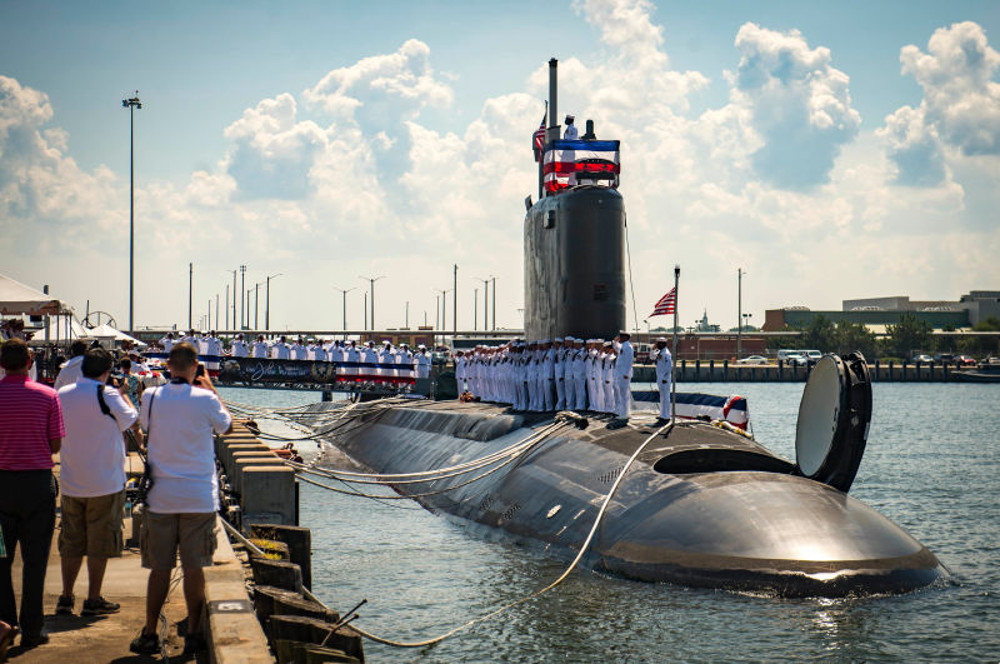
“That’s what the president’s budget has requested of us – to go look at those platforms,” Hyten said at the National Defense University. “We’re going to walk down that path.”
But as we at The War Zone have noted before, the core concepts of a nuclear SLCM are deeply worrisome. The biggest issue is that it would be difficult, if not impossible for a potential enemy to determine the difference between nuclear or conventional cruise missile strikes within what would almost certainly be an already short decision making window to begin with. The United States does not have a “no first use” policy with regards to nuclear weapons meaning that it could already potentially launch a nuclear strike in response to an opponents non-nuclear actions and without any other obvious warning.
Unlike ICBMs or even SLBMs, which have large infrared plumes at the time of launch and more readily appear on radar, cruise missiles can already be difficult to detect and classify, too. In order to make it more survivable against improving enemy air and missile defenses and their associated long-range sensors, a new nuclear-armed SLCM could have low-observable features that would make it even more difficult to spot. All of this would only shorten the amount of time an opponent might have to try and determine whether a strike was nuclear or conventional and how to respond.
Adversaries might feel they have to treat any cruise missile barrage as an incoming nuclear threat by default in order to feel more confident in their own nuclear deterrent or other, possibly asymmetric second-strike capabilities. This, in turn, could make it more difficult for the United States to employ sea-based cruise missile strikes, something it does routinely, without risking a major escalation.

And depending on which classes of submarines eventually gain the capability to launch the new SLCM, it could easily compel potential opponents to consider all American submarines as possible nuclear threats and prompt an arms race to field comparable systems and other countermeasures. The subsequent need for the United States to come up with its own counter-countermeasures could be a costly and further destabilizing endeavor.
The Trump Administration’s NPR insists both the low-yield SLBM and the new nuclear SLCM are both necessary in order to ensure the United States has a means of responding to a limited hostile nuclear strike or other major attack it decides warrants a nuclear response. At the same time, though, the Pentagon and other U.S. government agencies have not been unable to definitively explain why the previous posture could not adequately deter those threats through fear of massive nuclear retaliation. This in turn raises concerns about whether or not the presence of low-yield nuclear weapons raises the potential for the United States to actually use them in a crisis, something the U.S. military adamantly denies.
“If you’re saying that having low-yield nuclear weapons does not lower the threshold for use, then you’re essentially saying there’s no difference between using a low-yield and a high-yield weapon,” Alexandra Bell, the senior policy director at the Center for Arms Control and Non-Proliferation and a former senior State Department official, told HuffPost News in January 2018. “If you’re saying adamantly in here that this won’t change our current posture choices, it basically negates your reason to have this [low-yield] capability in the first place.”
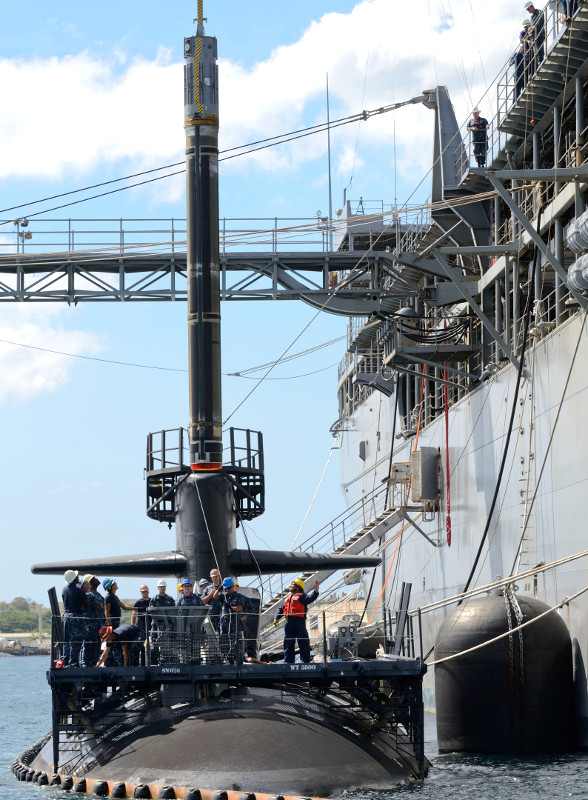
It’s not clear when, or even if, the U.S. military will begin to develop or actually field this new nuclear SLCM, either. The Pentagon’s budget request for the 2019 fiscal year only includes a small amount of funding to study what it would take to craft such a weapon and have it ready for service sometime in the next seven to 10 years.
This raises additional questions about why the Pentagon is so actively signaling its interest in this weapon at all. There is the possibility that the U.S. government is looking to looking to use the plan as a negotiation tactic to prompt potential adversaries, chiefly Russia, into abandoning their own new and destabilizing nuclear weapons, including those that outright violate existing arms control agreements.
“I don’t want to say in advance of a negotiation and undercut our negotiators’ position [by saying] what we would or would not do,” U.S. Secretary of Defense James Mattis told members of Congress during a hearing on Feb. 6, 2018 when asked about whether he would consider halting the SLCM developing in exchange for concessions for Russia regarding its treaty-busting nuclear land-based cruise missile. “I believe we have to give our negotiators something with which to negotiate.”
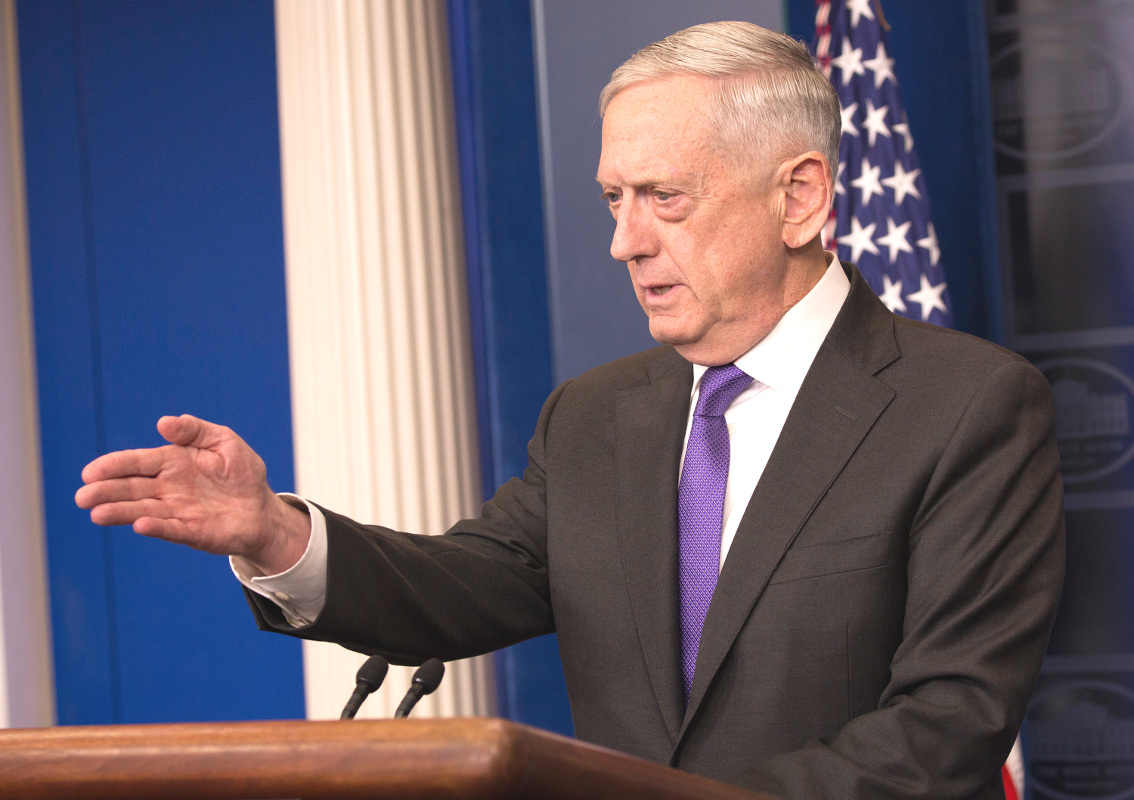
As we at The War Zone have explored in depth in the past, there’s no guarantee that this course of action will produce the desired results. This public emphasis on the SLCM, and other low yield options, could just as easily reinforce the Kremlin’s opinion that it needs its expanding and diverse nuclear options to retain a credible deterrent against the United States.
When he announced that American ships and submarines would no longer carry the TLAM-N during routine operations, President Bush acknowledged many of these issues. He specifically said that placing those missiles in storage, as well as removing a variety of other low-yield nuclear weapons from deployed locations abroad and other nuclear arms control measures, improved stability and reduced the likelihood of a nuclear exchange.
“This new force will be versatile, able to respond around the world to challenges, old and new,” he said in his speech to the American people on Sept. 27, 1991. “We can enhance stability and actually reduce the risk of nuclear war.”
If the U.S. government’s threshold for using nuclear weapons remains unchanged, it’s hard to understand how the basic structure of America’s nuclear triad is any less flexible than it was nearly three decades ago or how any benefits of a new nuclear SLCM outweigh the added risks and high costs any more now than they did then.
Contact the author: joe@thedrive.com
